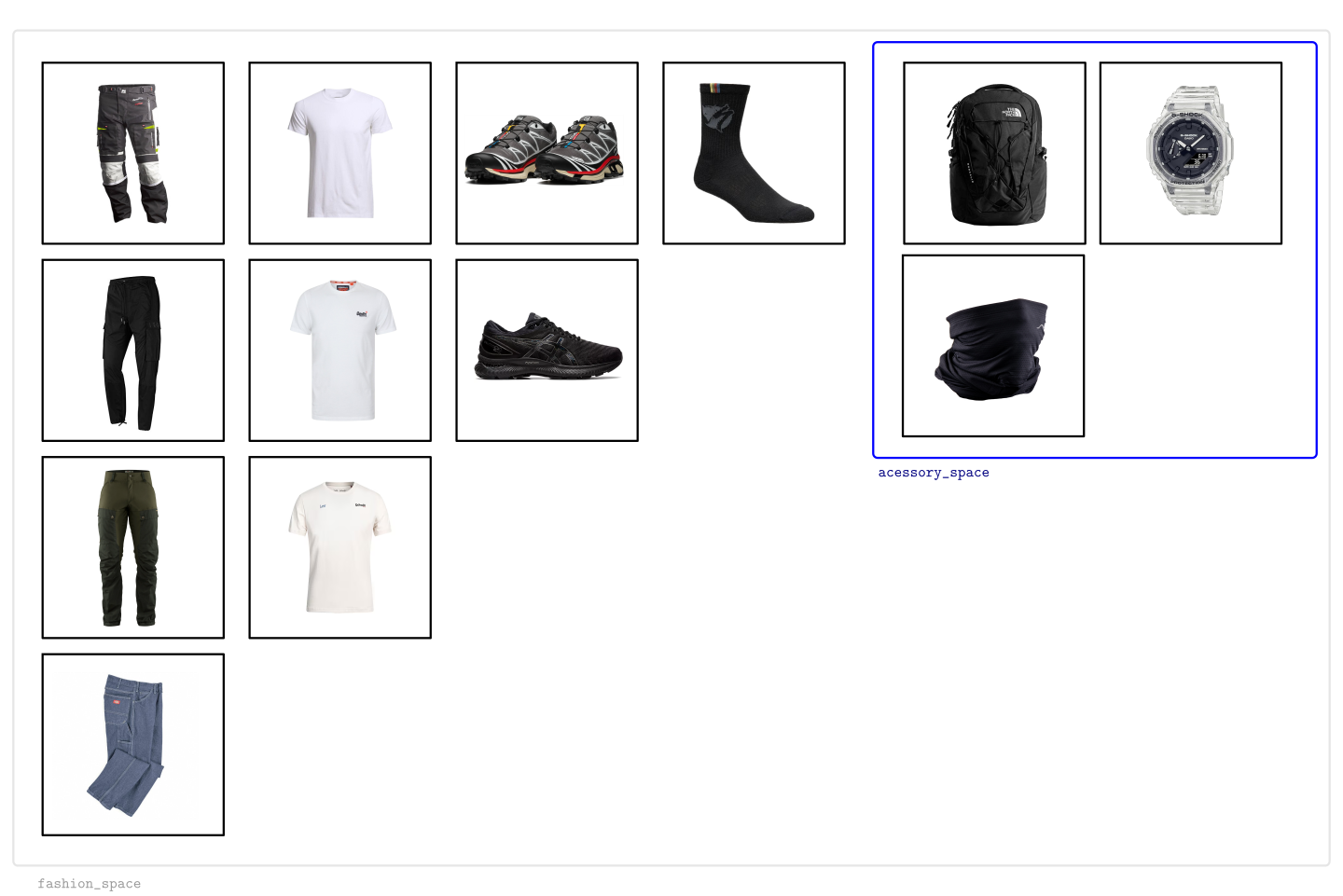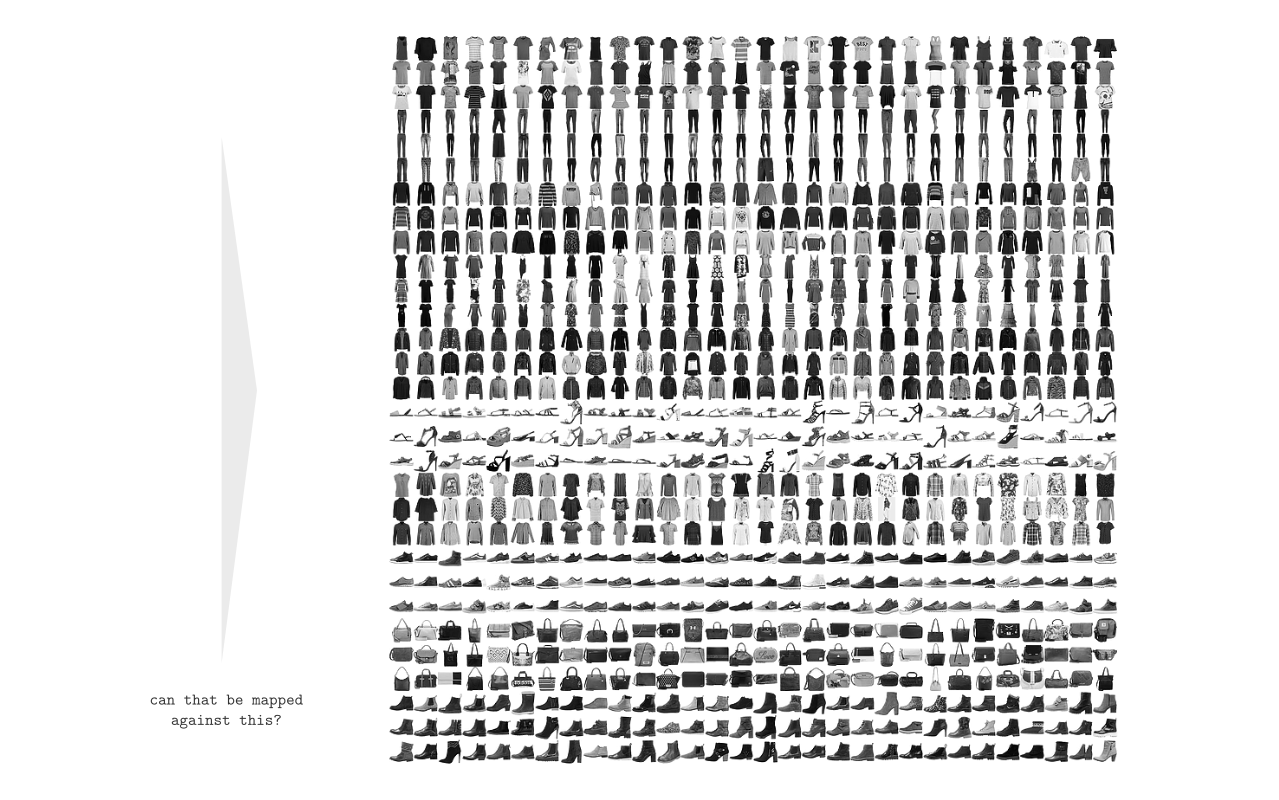“The joy of dressing is an art.” – John Galliano
my wardrobe
- Is style quantifiable?
- Does something look good because it is ‘fashionable’, or merely because it is an outlier from the ‘crowd’ (at a given point in time).
- Is taste tangible?
- How basic is my taste?
What better way to answer these questions than to plot my wardrobe in into fashion space… With that said, here is my (ideal) wardrobe:

I must say, enumerating my wardrobe was deeply satisfying. (In an ideal world, my daily outfit would be one of $4!$ random combinations of these items.) (if you know me irl, don’t comment on the accuracy of this)
tsne

- To be honest, the choice of
tsnewas quite arbitrary - it just works well. tsneis suitable for:- high dimensionality data
- non-linear data
- preserving local structure
You can find the notebook here
result

If you look carefully, my attire tends to lie at the edge of clusters. There are two potential explanations:
- Attributes of the photos are completely inconsistent with the rest of the dataset (e.g the shoes facing the opposite direction)
- I have edgy taste, y’know
Even if the positioning of my clothes had proper signal, it would be difficult to associate with some concrete fashion-concept like ‘chicness’.
However, from first principles, we can ascertain a rough idea of ‘meaning’ within clusters…
- What mechanisms lead
tsneto this 2D representation? - Well,
tsnetries to keep neighboring instances close, and dissimilar instances far apart, after mapping from the high-dimensional pixel space to our low-dimensional $\mathbb{R}^2$ space - Similarity in pixel space would be most likely dominated by two broad features: structure and luminosity.
- This similarity is preserved after the mapping to 2d space, which can be seen immediately from the graph; items which are roughly the same color and shape